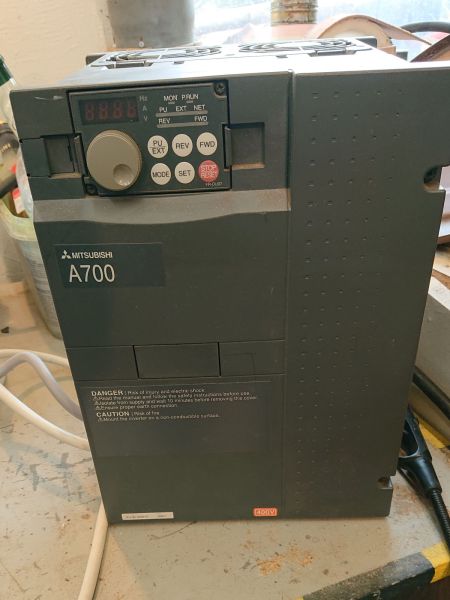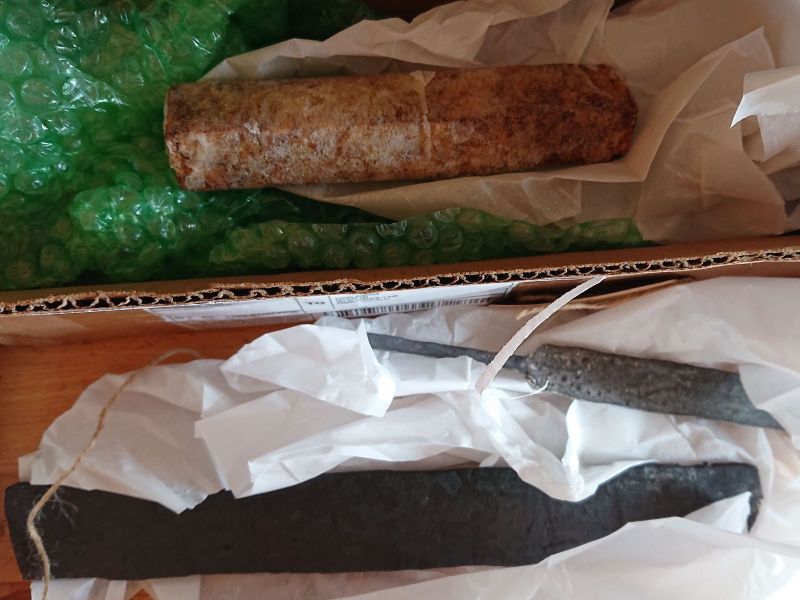My belt grinder has served me well, and for a hobbyist, it would be probably good enough. But since I am inching my way towards knife making not being just a hobby, I needed some significant improvement on it. And an opportunity luckily arose.
One of the good things about my previous employer was that there was an internal process for employees to get obsolete materials and equipment either cheaply or completely cost-free. I have used this opportunity quite often and got a lot out of it – I am well stocked in graphite and alluminium, I got precise analytic scales completely for free, and one of the last things I have managed to get was a variable frequency drive.
I was not able to haggle this one down to zero, it was a bit pricey even though used, and I also had to pay a bit to a professional electrician to connect it for me. I could get a new one for a bit cheaper if I capped it at the 1,5 kW that my motor has (this one can handle 5,5 kW) and took the cheapest one there is, but it was still a good deal even if it was not exactly a bargain.
And it works like a charm, even when I am not able to use anything more than the manual mode yet. Finally, I have the ability to change the speed of the motor as I need it, I can even reverse the rotation. I have tested it already and it is exactly what I hoped for- finally I can work wood without burning it and I can sharpen tools and have a bit more time before the edge starts overheating.
I hope it continues to work well – I have great plans for the future. Multiple grinding wheels, a polishing attachment and, maybe, even a lathe attachment. The belt grinder shall not rest!













































